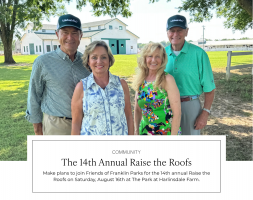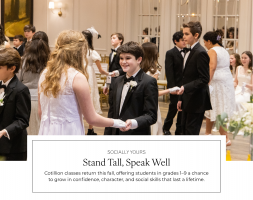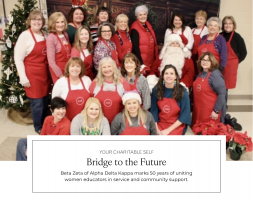Labor of Love
By Dominique Paul | Photography by Shannon Leblanc
Standing on the front porch of the historic Hayes House, looking out over the rolling hills of Harlinsdale Farm, one can almost imagine what it felt like to stand in that very spot some ninety years ago. It’s a rainy Friday afternoon and, while the year is 2024, it feels as though I’ve been teleported back in time to the 1930’s. My surroundings beckon memories that aren’t my own, and I can almost hear The Andrews Sisters playing on the Victrola from inside the home’s front parlor. Such is the power (and purpose) of historic home restoration.After a ten-month renovation, the once-dilapidated Hayes House has been restored to her original glory thanks to the efforts of the Friends of Franklin Parks and their many donors. It’s the culmination of years of hard work, and the porch’s green floor boards have barely dried as Torrey Barnhill, Friends of Franklin Parks Executive Director, explains the labor of love that went into saving this historic property located on the grounds of The Park at Harlinsdale Farm.
“Harlinsdale is a special place for many reasons,” says Torrey. “It’s been called the central park of Franklin as it sits perfectly in the middle of Franklin’s rolling hills. The rich history of Harlinsdale reaches back to the 1930s, when the Hayes family moved to the farm. Soon this rural oasis became the cornerstone of the Tennessee Walking Horse breed.”
It all began in 1909, when W.W. Harlin Sr. bought the 200-acre tract of land that would become Harlinsdale Farm and invited his nephew Harlin Hayes to join him in the fledgling gaited horse industry. In the mid-1930’s, Harlin Hayes and his family lived in the circa 1890 Queen Anne Victorian farmhouse on the property now known as the 'Hayes House.' Under the management of Harlin Hayes, Harlinsdale Farm produced two-time World Champion, and arguably the greatest Tennessee Walking Horse of all time, Midnight Sun, who is buried on the property. Harlinsdale Farm served mainly as a horse breeding operation from the 1940’s until the early 2000’s when the family sold the farm to the City of Franklin for use as a park. Since that time, the Hayes House sat empty and largely untouched.
“The success of Harlinsdale wouldn’t have been possible without the family residing in the Hayes house,” says Torrey. “When learning about a legacy as big as Harlinsdale, it can be easy to forget that it all started with a horse and hardworking everyday folks.”
But saving Hayes House would cost an estimated $750,000.
In 2021, Friends of Franklin Parks launched a fundraising effort via their annual ‘Raise the Roofs’ fundraiser and public donations. “People want to be a part of these important projects, and it costs about $200 per square foot to renovate a historic home in Franklin, so we started selling off square footage to our friends,” says Torrey. For as little as $200, locals could invest in a piece of the Hayes House. "While the deed doesn’t come with any special privileges, there’s pride in knowing we played a role in bringing it back to life.”
After meeting their fundraising goal, it took a year and a half to get all of the state and local permits, and restoration on the historic home finally commenced in May 2023. “We had to abate and remediate the mold, asbestos and lead, and then the real work began,” shared Torrey. “It was at that time we activated the Hayes House Design Committee [consisting of] Jay Sheridan, Susan Smallwood, Clay Harlin, and myself. And Mary Pearce and Joanne Haynes would help with some of the historical and design features as they are so incredibly experienced and talented!”
Design Committee Chair Susan Smallwood shared that her approach to the historic redesign required some adjusting. “My vision as a designer and the vision for the house were honestly two very different things. I quickly learned that the goal wasn’t to make the most beautiful home to walk into by today’s standards, but to return it to it’s original beauty as a working farmhouse with great bones.”
Upon entering the Hayes House, these “great bones” are immediately apparent. Soaring ceilings, curved walls and original wood flooring greet you in the entry hall, leading you through a maze of ornate molding with original fireplaces in nearly every room and antique lighting fixtures throughout -many of which are original to the home. “We used the original light fixtures and had them rewired to keep the original finishes in the house,” says Susan. The dining room features a gorgeous, era-appropriate crystal chandelier discovered by Mike Wolfe of American Pickers fame.
But it’s the wallpaper that’s the real showstopper.
Early in the process, a wallpaper assessment revealed three layers of wallpaper hidden in the walls, each indicative of a different decade in the home’s history. The team had passionate opinions about which era should prevail. “We had very different opinions at times, but consensus was always reached by thoughtful discussion and deference to the best wisdom of historical perspectives.” It was thus decided that the Hayes House would “tell the story of a working farmhouse of a successful equestrian operation by the Harlin Family in the 1930’s.” It was undoubtedly the home’s heyday.
“The design committee’s role was to help interpret and bring back to life the home in the 1930’s,” says Susan. So, she and fellow designer Joanne Haynes got to work sourcing original and historically accurate wallpaper reproductions for use in the home. Now, to roam through Hayes House feels like a time-travel adventure through wallpaper: A grand-scale textural blue damask adorns the parlor walls, a playful equestrian toile lights up the dining room and whimsical butterflies thrill in one of the bedrooms. But the real surprise was what lay beneath the kitchen floor.
“The most exciting discovery was uncovering the linoleum floor that was laid during the kitchen renovation in the late 1950’s. It was quirky, colorful and very 50’s! We searched far and wide to find someone who would replicate it. I absolutely love it!” shares Susan.
The retro 1950’s kitchen was the hub of the Hayes Family's home - and the height of modernity at the time. Such a thoughtful and accurate renovation would not have been possible without input from the Hayes family. “Fortunately, we had living family members who shared memories and lots of photos for us to refer to,“ says Susan. “We also have original furniture from the Hayes family that will be displayed in the home and will help tell the story of a family on the farm.
With its restoration now complete, the Hayes House and event lawn will offer rental space for small weddings, arts festivals, nonprofit fundraisers, corporate events and more. The home will also provide the platform and space for educational opportunities about Harlinsdale Farm and will include an art gallery showcasing the work of local artists.
“I hope the community understands that telling the story of the Hayes House was a labor of love and we hope many generations will come to enjoy, learn and relish the wealth of history in our midst,” says Susan.
We hope so too.




























